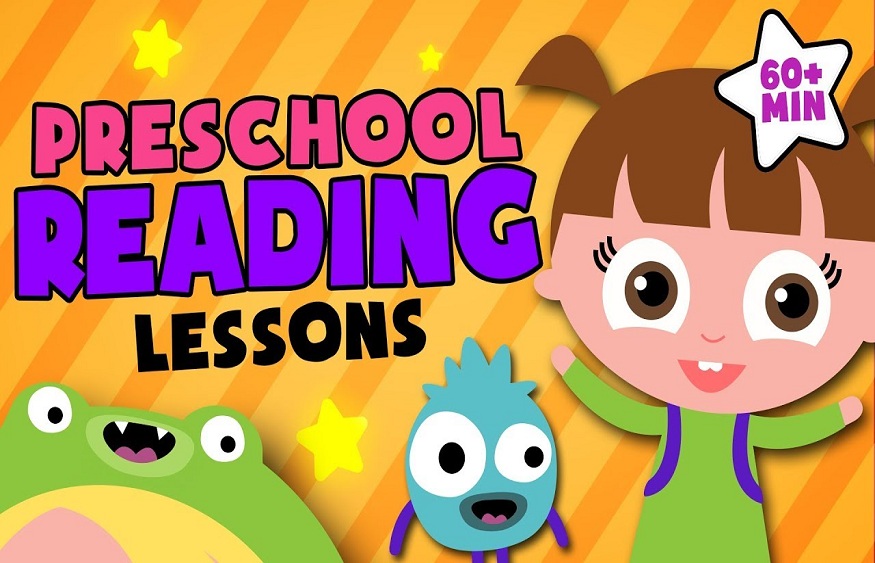Preschool education plays a crucial role in shaping a child’s intellectual development and preparing them for future academic success.
In Singapore, a nation known for its excellent education system, preschool reading and writing lessons are meticulously designed to foster strong foundational skills in young learners.
These preschool writing lessons go beyond simple phonics and handwriting exercises, encompassing a comprehensive approach that cultivates a love for reading and writing while laying a robust groundwork for future language proficiency.
This article explores the key features of preschool reading and writing lessons in Singapore and the effective teaching strategies employed to nurture young minds.
Holistic Language Development
Preschool reading and writing lessons in Singapore prioritize holistic language development.
Children are exposed to a rich literacy environment, where they are encouraged to explore various forms of texts, such as storybooks, poems, and informational texts.
Through shared reading experiences and interactive discussions, educators aim to expand vocabulary, develop comprehension skills, and cultivate a deep appreciation for literature.
Preschoolers engage in activities that enhance their listening and speaking skills, enabling them to express their thoughts and ideas confidently.
Phonics and Word Recognition
Preschool phonics instruction forms a fundamental aspect of preschool reading lessons in Singapore.
Children are introduced to the sounds of letters and their corresponding symbols, allowing them to decode words effectively.
Systematic phonics programs help young learners develop phonemic awareness and phonological skills, paving the way for successful reading.
Preschool phonics curriculum is integrated with word recognition strategies, such as sight words and high-frequency word lists; children gradually acquire a repertoire of words, enhancing their reading fluency.
Writing and Handwriting Skills
In Singaporean preschools, writing is introduced alongside reading, ensuring a balanced approach to literacy development.
Children are taught correct letter formation and handwriting techniques from an early stage. Emphasis is placed on developing fine motor skills, pencil grip, and hand-eye coordination to facilitate confident and legible writing.
Preschoolers are encouraged to express their thoughts through simple sentence structures, gradually progressing to more complex compositions.
They receive constructive feedback and guidance to improve their writing skills, fostering a sense of pride and accomplishment.
Multimodal Learning
Preschool reading and writing lessons in Singapore employ a multimodal approach, recognizing that children learn through various sensory channels.
Interactive technologies, visual aids, manipulative materials, and hands-on activities are incorporated into lessons to engage children actively.
This multimodal learning environment enhances comprehension, vocabulary acquisition, and cognitive development, making the learning process enjoyable and effective.
Play-based and Inquiry-based Learning
Singaporean preschools recognize the importance of play in a child’s early education. Reading and writing lessons are designed to be play-based and inquiry-based, where children actively explore, experiment, and inquire.
Through imaginative play, storytelling, and role-playing, preschoolers develop language skills naturally.
Teachers facilitate open-ended discussions, encourage critical thinking, and stimulate curiosity, allowing children to make meaningful connections between their experiences and the written word.
Collaborative Learning and Language-rich Environment
Preschool reading and writing lessons in Singapore foster a collaborative learning environment.
Children are encouraged to work in pairs or small groups, engaging in discussions, sharing ideas, and practicing their emerging literacy skills together.
The classroom environment is intentionally designed to be language-rich, with print-rich displays, labeled learning centers, and authentic reading and writing materials readily accessible.
This immersion in a language-rich environment strengthens vocabulary, language fluency, and a positive attitude towards reading and writing.
Comprehension Strategies
Preschool reading lessons in Singapore focus on teaching comprehension strategies that help young learners understand and make meaning from texts.
Children are introduced to various strategies, such as predicting, visualizing, questioning, and summarizing.
Through guided discussions and activities, they learn to actively engage with the text, identify main ideas, infer meaning, and make connections.
These comprehension strategies enhance their critical thinking skills and foster a deeper understanding of the material they read.
Storytelling and Narrative Skills
Storytelling plays a vital role in preschool reading and writing lessons in Singapore. Children are exposed to a wide range of stories, including traditional tales, contemporary literature, and personal narratives.
They learn to retell stories using their own words, understand story elements such as characters, settings, and plot, and develop narrative skills by sequencing events and constructing coherent stories.
Storytelling activities enhance their language proficiency, imagination, and creativity.
Informational Texts and Research Skills
In addition to narrative texts, preschoolers in Singapore are introduced to informational texts to broaden their understanding of the world.
They learn how to navigate nonfiction books, identify key information, and extract meaning from visuals, labels, and captions.
These lessons also incorporate basic research skills, such as gathering information, asking questions, and using resources to find answers.
By exploring informational texts, children develop a curiosity for the world around them and expand their knowledge base.
Oral Presentation Skills
Effective communication skills are emphasized in preschool writing lessons in Singapore. Children are encouraged to express themselves orally through presentations and show-and-tell activities.
They learn to articulate their thoughts clearly, use appropriate vocabulary, and engage their audience.
These opportunities for oral expression enhance their confidence, public speaking abilities, and overall language proficiency.
Digital Literacy
As technology plays an increasingly significant role in society, preschools in Singapore incorporate digital literacy lessons into their reading and writing programs.
Children are introduced to age-appropriate digital tools, interactive e-books, educational apps, and online resources.
They learn to navigate digital platforms, use technology responsibly, and develop digital reading and writing skills.
Digital literacy lessons prepare them for the digital age and equip them with essential skills for the future.
Cultural and Bilingual Education
Singapore’s multicultural and multilingual society is reflected in preschool reading and writing lessons.
Children are exposed to diverse cultures, traditions, and languages through literature and activities.
Preschools in Singapore value bilingual education and children have opportunities to learn and use multiple languages, such as English, Mandarin, Malay, or Tamil.
Bilingual education enhances their language skills, cognitive flexibility, and cultural understanding.
Conclusion
Preschool reading and writing lessons in Singapore are thoughtfully designed to provide a solid foundation for young learners.
By embracing a holistic approach to language development, integrating phonics instruction, nurturing writing skills, and employing multimodal and play-based learning strategies, Singaporean preschools cultivate a lifelong love for reading and writing.
These lessons empower children with the skills and confidence needed to navigate the world of literacy, setting them on a path towards academic excellence and a bright future.





